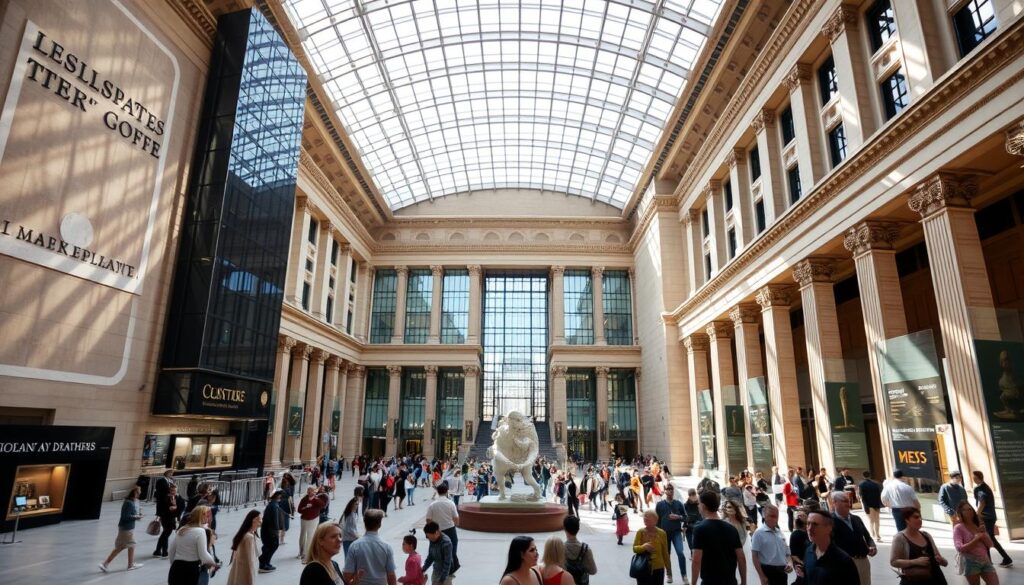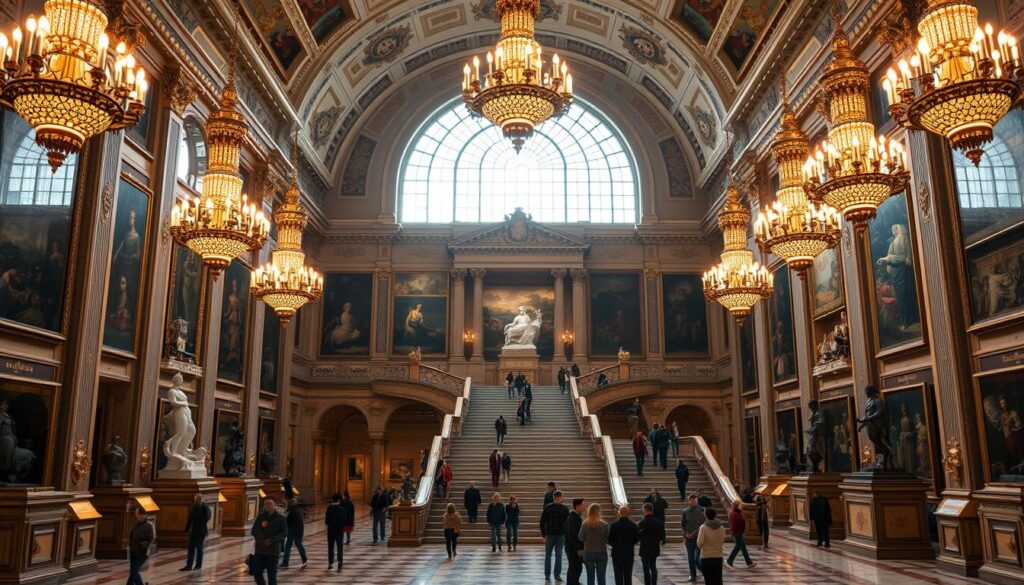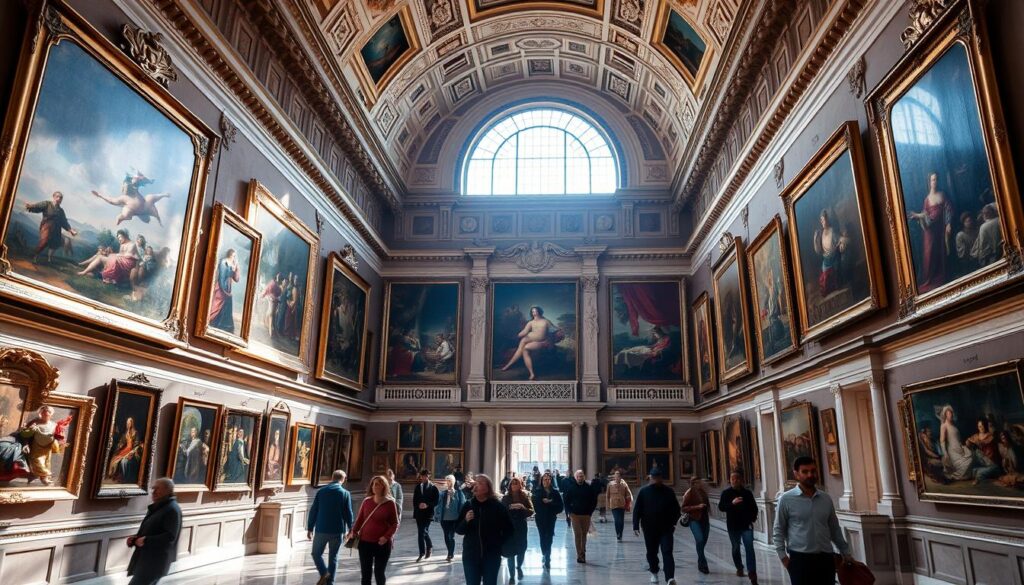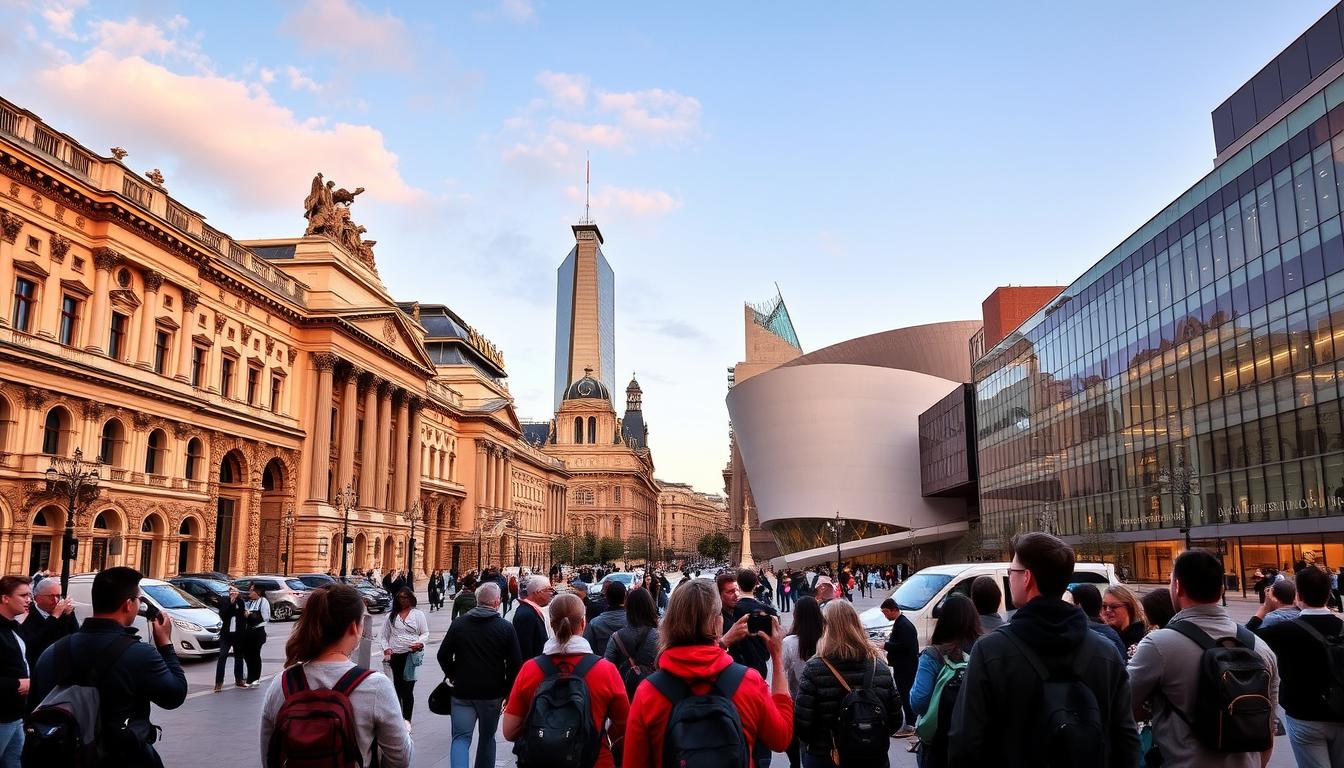Must-Visit Museums Around the World
Did you know the Smithsonian Institution holds enough artifacts to give every person on Earth two items—with millions left over? This sprawling complex in Washington, D.C., isn’t just big. It’s a time machine showcasing everything from dinosaur bones to space shuttles.
Across the Atlantic, Paris’s Louvre started as a fortress before evolving into the world’s most visited museum. Its glass pyramid entrance, added in 1989, now symbolizes the blend of ancient and modern. Meanwhile, New York’s Metropolitan Museum of Art packs 5,000 years of global history under one roof.
These cultural giants do more than display art. They tell stories of emperors, revolutions, and human ingenuity. You’ll find Viking swords beside Renaissance paintings and interactive tech exhibits that make history feel alive.
What makes these places unforgettable? It’s not just their size or age. It’s how they connect us to ideas that shaped civilizations. One minute you’re staring at a 2,000-year-old sculpture. The next, you’re analyzing a Picasso that changed how we see color.
Key Takeaways
- The Smithsonian’s 137 million objects make it Earth’s largest museum network
- Paris’ Louvre combines medieval architecture with modern design elements
- New York’s Met covers every continent across 5 millennia of human creativity
- Top museums mix ancient artifacts with cutting-edge technology
- These institutions preserve humanity’s shared stories and innovations
Introduction: Uncovering the World’s Best Museums
![]()
Cultural time capsules hold more than relics—they guard humanity’s collective memory. Every May 18th, International Museum Day reminds us how these spaces spark curiosity across generations. From interactive science labs to Renaissance galleries, they turn dusty history into vibrant conversations.
What separates exceptional institutions from ordinary ones? It’s their power to make art whisper secrets across centuries. A 17th-century portrait might share a wall with holographic displays, creating dialogues between old and new.
“Museums are living classrooms where stones sing and canvases breathe.”
Consider these standout features of leading cultural hubs:
| Focus | Example | Unique Feature |
|---|---|---|
| Historical Art | Louvre, Paris | Augmented reality tours |
| Modern Science | Exploratorium, SF | Hands-on experiments |
| Cultural Fusion | British Museum | Themed storytelling nights |
The art of curation matters too. Top institutions design flows that guide visitors from ancient pottery to AI-generated installations without whiplash. They’re not just storage rooms—they’re cultural crossroads.
Looking for your next mind-expanding place? Whether it’s a niche gallery or sprawling complex, the best museums turn observation into participation. You don’t just see history—you time-travel through it.
Must-Visit Museums Around the World – A Global Perspective

What do a Dutch masterpiece and an Egyptian sarcophagus have in common? They’re neighbors in humanity’s shared attic. The British Museum proves this daily, displaying eight million items from Assyrian lion carvings to Easter Island statues under one roof.
Europe’s heavyweights like Rome’s Vatican Museums showcase curation as art—22 collections spanning Raphael frescoes to modern religious works. Amsterdam’s Rijksmuseum takes a different approach, dedicating 900,000 pieces to Dutch Golden Age innovations in trade and art.
Asian institutions rewrite the rulebook. Tokyo’s Mori Building Digital Art Museum immerses visitors in flower-filled projections, while Seoul’s National Palace Museum pairs Joseon dynasty relics with augmented reality tours.
North American hubs prioritize hands-on learning. Chicago’s Field Museum lets you “excavate” dinosaur bones, while Mexico City’s Museo Soumaya displays Rodin sculptures in a shimmering aluminum building shaped like a nautilus shell.
The best museums share four traits:
- Collections telling interconnected human stories
- Expert teams preserving knowledge across generations
- Architecture enhancing exhibits (think Bilbao’s titanium curves)
- Experiences sparking “aha!” moments for all ages
From Cairo to Kyoto, these spaces turn artifacts into a timeless dialogue. You leave not just informed, but part of the conversation.
Iconic Museums That Shaped History

Powerful rulers once walked these halls—now they welcome millions of curious visitors. Four legendary institutions demonstrate how palaces and fortresses became guardians of human achievement.
Historical Landmarks and National Treasures
The Louvre began as a 12th-century fortress protecting Paris. By 1793, it transformed into a public museum inside a royal palace. Today, its 35,000 artworks span from ancient Mesopotamia to 19th-century Europe.
Russia’s Hermitage tells a similar story. Catherine the Great started her 1764 art collection in the Winter Palace—a blue-and-white baroque masterpiece. Now six buildings house three million items, from Egyptian mummies to Matisse paintings.
| Institution | Original Purpose | Year Transformed | Collection Size |
|---|---|---|---|
| British Museum | National Collection | 1759 | 8 million objects |
| Smithsonian | Research Complex | 1846 | 137 million items |
| Hermitage | Imperial Residence | 1764 | 3 million pieces |
Legacy of Cultural Institutions
These museums rewrote the rules of public access. The British Museum broke barriers in 1759 by letting ordinary citizens study its global collection. Meanwhile, America’s Smithsonian became a model for democratic learning through 19 museums and nine research centers.
Their architectural grandeur enhances the experience. Visitors explore neoclassical galleries where kings once hosted balls, creating tangible links between past and present. As one UNESCO advisor notes: “These buildings teach history before you even see the exhibits.”
Through wars, revolutions, and social changes, these institutions preserved humanity’s story. They prove that museums aren’t just about artifacts—they’re living records of our shared journey.
Artistic Masterpieces in Classic Galleries

Walking through Europe’s grand galleries feels like flipping through a 500-year art history book. These spaces preserve brushstrokes that changed how we see light, emotion, and human form.
European Classics in Art and History
Florence’s Uffizi Gallery holds the Renaissance’s greatest hits. Botticelli’s Birth of Venus shares walls with Leonardo’s unfinished Adoration of the Magi, showing how 15th-century artists broke medieval traditions.
Madrid’s Prado Museum reveals Spanish royal tastes. Velázquez’s Las Meninas dazzles alongside Goya’s dark Black Paintings. The collection spans Flemish oil techniques to Italian sculpture.
Innovative Works and Timeless Exhibits
Amsterdam’s Rijksmuseum packs 8,000 pieces into 80 galleries. Rembrandt’s Night Watch dominates, while Vermeer’s quiet interiors show 17th-century life. The building itself mixes Gothic arches with modern lighting.
New York’s Metropolitan Museum of Art brings European genius to America. Their European wing pairs Rodin bronzes with Degas dancers, proving collections can cross continents while keeping stories intact.
These galleries don’t just display art—they map creative revolutions. From brush techniques to patronage systems, every frame whispers about the century that shaped it.
Hidden Gems and Under-the-Radar Museums
Tucked away from tourist trails, smaller institutions reveal a city’s heart through everyday stories. These spaces turn attics into time machines, where vintage tram tickets and retro furniture speak louder than famous artifacts.
Quaint Local Discoveries
Dublin’s Little Museum packs 20th-century Irish life into a Georgian townhouse. Visitors explore the capital’s evolution through donated photos and rotary phones—a neighborhood project that grew into a cultural landmark.
Berlin’s DDR Museum makes history tactile. Sit in a Trabant simulator, flip through Stasi files, or rummage through replica East German pantries. It transforms political narratives into lived experiences.
In Cape Town, the Zeitz MOCAA reimagined a grain silo into Africa’s boldest contemporary art place. Its concrete chambers now showcase South Africa’s creative pulse, proving adaptive reuse can spark cultural revolutions.
Hong Kong’s history culture comes alive through reconstructed 19th-century shops and tram rides. These micro-museums don’t just display objects—they let you walk through chapters of local culture often missed by grand institutions.
FAQ
What are the best museums for exploring 20th-century art?
Which museums are considered historical landmarks?
Are there museums suitable for kids and families?
What under-the-radar museums are worth visiting?
Which museums have the most striking architecture?
How can I plan a trip to multiple museums efficiently?

Eduard Kingly is a travel and lifestyle content creator with a focus on personal development and education. He combines firsthand travel experiences with research-driven insights to guide readers in discovering new places, building better habits, and pursuing meaningful learning.




